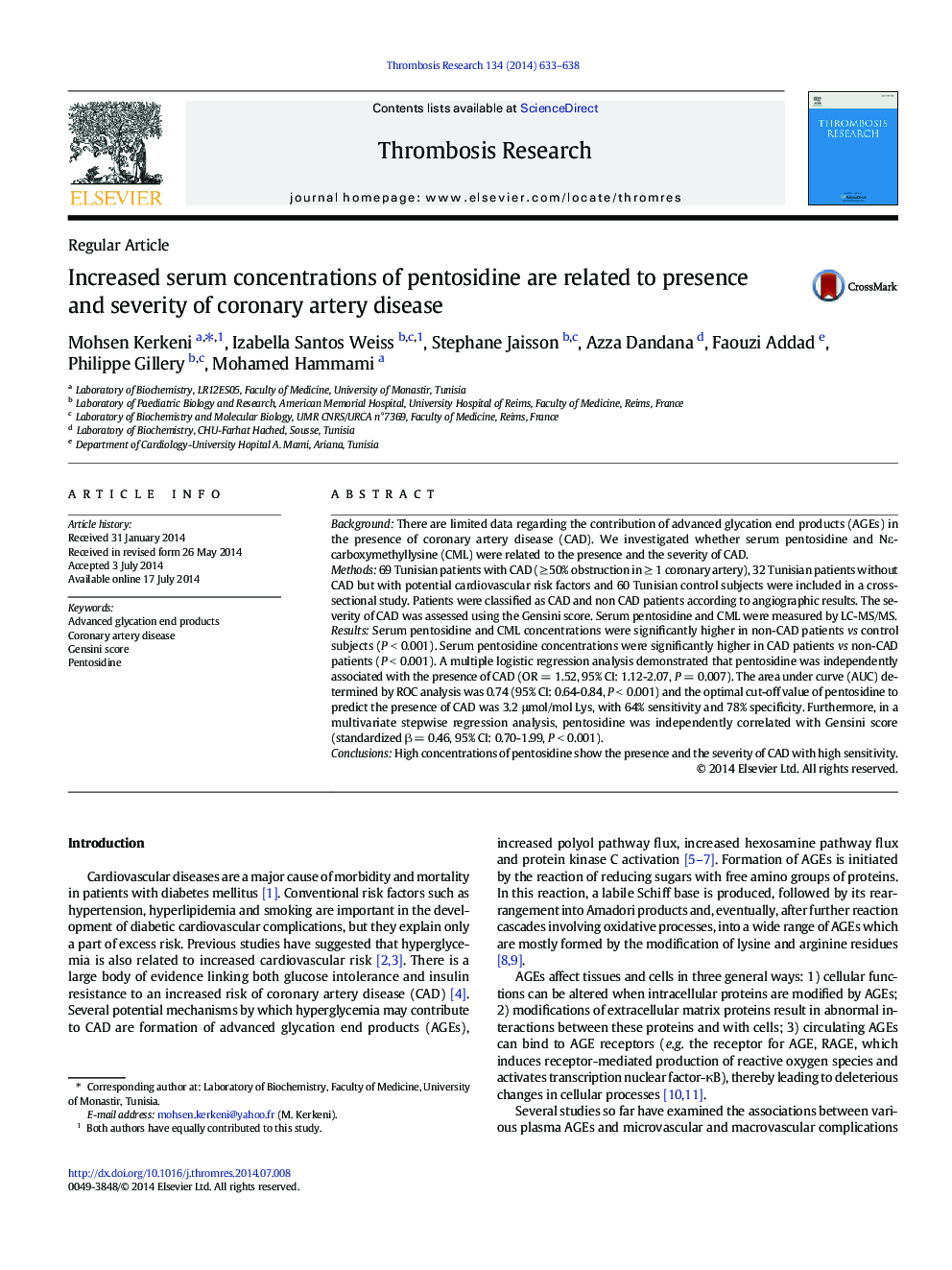| Article ID | Journal | Published Year | Pages | File Type |
|---|---|---|---|---|
| 6002002 | Thrombosis Research | 2014 | 6 Pages |
BackgroundThere are limited data regarding the contribution of advanced glycation end products (AGEs) in the presence of coronary artery disease (CAD). We investigated whether serum pentosidine and Nε-carboxymethyllysine (CML) were related to the presence and the severity of CAD.Methods69 Tunisian patients with CAD (â¥Â 50% obstruction in â¥Â 1 coronary artery), 32 Tunisian patients without CAD but with potential cardiovascular risk factors and 60 Tunisian control subjects were included in a cross-sectional study. Patients were classified as CAD and non CAD patients according to angiographic results. The severity of CAD was assessed using the Gensini score. Serum pentosidine and CML were measured by LC-MS/MS.ResultsSerum pentosidine and CML concentrations were significantly higher in non-CAD patients vs control subjects (P < 0.001). Serum pentosidine concentrations were significantly higher in CAD patients vs non-CAD patients (P < 0.001). A multiple logistic regression analysis demonstrated that pentosidine was independently associated with the presence of CAD (OR = 1.52, 95% CI: 1.12-2.07, P = 0.007). The area under curve (AUC) determined by ROC analysis was 0.74 (95% CI: 0.64-0.84, P < 0.001) and the optimal cut-off value of pentosidine to predict the presence of CAD was 3.2 μmol/mol Lys, with 64% sensitivity and 78% specificity. Furthermore, in a multivariate stepwise regression analysis, pentosidine was independently correlated with Gensini score (standardized β = 0.46, 95% CI: 0.70-1.99, P < 0.001).ConclusionsHigh concentrations of pentosidine show the presence and the severity of CAD with high sensitivity.
